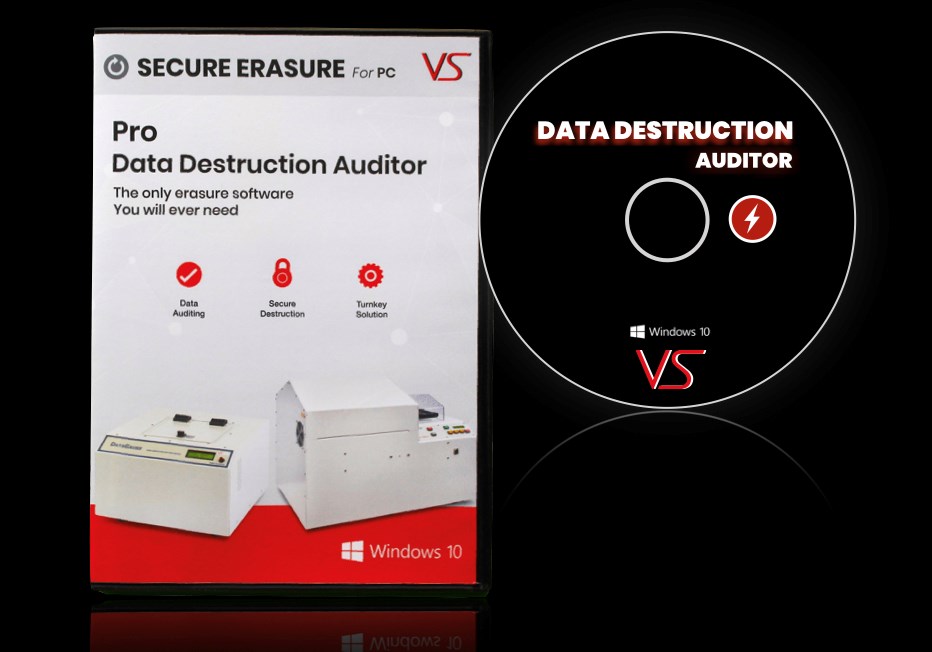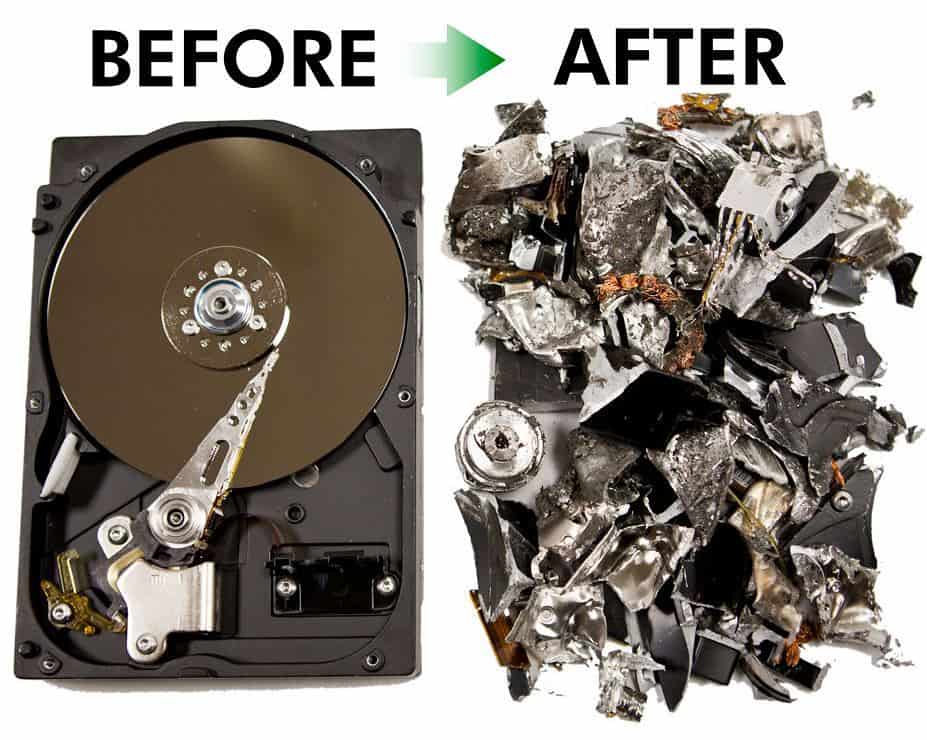Data Destruction Solutions: A Key Element in Your Cyber Security Technique
Data Destruction Solutions: A Key Element in Your Cyber Security Technique
Blog Article
Discovering the Relevance of Information Damage in the Context of Computer System Protection Providers and Protecting Confidential Information
In an age where information violations are progressively typical, the significance of efficient information devastation can not be overstated. What methods can companies implement to improve their information destruction protocols?
Comprehending Information Destruction
Information destruction is a vital element of computer system safety and security that includes the irreversible removal of information from storage tools to stop unapproved access and potential data breaches. In an increasingly electronic landscape, companies deal with enhanced risks related to sensitive information being incorrectly accessed or exploited. Effective data damage safeguards against these dangers, making sure that personal dataâEUR" such as consumer details, copyright, and economic recordsâEUR" can not be recouped after disposal.
Recognizing the value of information damage prolongs beyond simple compliance with regulatory and lawful structures; it is essential for keeping business stability and depend on. When data is improperly managed or improperly damaged, the repercussions can be serious, including economic loss, reputational damages, and legal liabilities.

Methods of Information Elimination
One widespread approach is information cleaning, which involves overwriting existing data with random patterns multiple times. This technique renders the original data irretrievable, making it a popular choice for organizations seeking to safeguard private info.
One more technique is degaussing, which utilizes a powerful magnetic field to interrupt the magnetic domains on storage devices, efficiently removing the data. This approach is particularly effective for magnetic media yet is not relevant to solid-state drives.
Physical devastation is an additional durable technique, involving the shredding or crushing of storage devices. This method warranties that information healing is practically impossible, making it ideal for very delicate information.
Last but not least, file encryption can serve as a complementary strategy to information removal. By securing information prior to removal, companies can add an added layer of protection, making sure that even if residues are recuperated, they remain hard to reach without the decryption secret. Each technique should be picked based upon the level of information level of sensitivity and the particular security needs of the organization.
Legal Conformity and Data Protection
Organizations should browse a complicated landscape of lawful demands connected to data protection, particularly after applying techniques of information removal. Numerous policies, such as the General Information Protection Guideline (GDPR) and the Health Insurance Policy Portability and Responsibility Act (HIPAA), enforce strict standards on just how organizations need to deal with and get rid of of delicate data. Failure to abide by these regulations can cause significant lawful effects, Get the facts including considerable penalties and reputational damage.
Data damage procedures must be carefully documented to show conformity with applicable legislations and requirements. This documents not just functions as proof of adherence to legal obligations however likewise highlights a dedication to guarding delicate information. Organizations ought to likewise establish clear policies relating to information retention and damage timelines, making certain that information is not held longer than necessary.

Additionally, routine audits and evaluations of data destruction techniques are crucial to keep conformity and adjust to advancing lawful structures (data destruction). By proactively attending to legal requirements, companies can alleviate risks related to information breaches and demonstrate their dedication to data safety and security. Ultimately, focusing on legal conformity in information destruction procedures is not simply a regulatory commitment, however a fundamental facet of a durable data protection technique
Impact on Organization Track Record
The credibility of an blog organization can be dramatically affected by its approach to data devastation and administration. In today's electronic landscape, where information breaches can occur anytime, the failure to effectively get rid of sensitive information can bring about severe consequences. Organizations that improperly manage data destruction threat revealing confidential customer info, which not just breaks personal privacy laws however additionally wears down trust fund among clients and stakeholders.
A tarnished track record can cause decreased client commitment, as clients end up being reluctant to involve with a business that has shown oversight in safeguarding their information. Adverse attention bordering a data breach can have a long lasting impact, as prospective clients could be hindered by the regarded absence of security. This can lead to a direct decline in revenue and market share.
Furthermore, companies that prioritize data destruction as part of their security technique can enhance their credibility by showcasing their commitment to safeguarding sensitive info. By embracing rigid data administration practices, organizations can not just minimize threats however likewise position themselves as trustworthy entities in their corresponding sectors, consequently enhancing their general brand photo.

Best Practices for Secure Disposal
Implementing finest practices for secure disposal of information is vital for alleviating threats related to information breaches and ensuring conformity with privacy laws. Organizations must adopt a thorough data disposal plan that describes treatments for both physical and digital data devastation.
For physical data storage space devices, such as hard disk drives, shredding or degaussing is recommended to stop data recuperation. Additionally, companies should preserve a chain of safekeeping documents during the disposal procedure, ensuring responsibility and traceability of disposed things.
For digital information, making use of software that follows sector standards for data cleaning is essential. This software application needs to overwrite existing data several times, making recuperation virtually impossible. It is likewise company website vital to verify the efficiency of the information devastation procedure through audits or third-party evaluations.
Training staff members on safe and secure disposal practices adds one more layer of safety, as human mistake can often result in data exposure. Consistently updating and evaluating disposal policies guarantees positioning with progressing laws and technical advancements. By implementing these best practices, organizations can considerably decrease the danger of unauthorized data access and enhance their overall information defense approach.
Verdict
Finally, information damage is an essential element of computer safety and security services that ensures the defense of secret information from unapproved gain access to. Executing efficient methods of information eradication, sticking to lawful compliance, and recognizing the influence on organization track record are necessary elements of an extensive information safety technique. By adopting ideal methods for protected disposal, companies can promote count on with customers and protect sensitive information, ultimately adding to a much more secure electronic landscape.
In an age where information breaches are increasingly typical, the significance of effective information damage can not be overstated.Data damage is a critical component of computer safety and security that involves the permanent removal of data from storage space tools to avoid unauthorized gain access to and prospective information violations. Organizations ought to additionally establish clear plans concerning information retention and destruction timelines, making sure that information is not held longer than required.
By proactively resolving legal demands, companies can mitigate dangers linked with data breaches and show their dedication to data safety (data destruction). Inevitably, prioritizing legal conformity in information destruction processes is not simply a governing obligation, however a basic facet of a robust data safety approach
Report this page